Key indicators to watch out for when evaluating candidates for remote roles
Hiring the wrong candidate can have detrimental effects on your organization. It can lead to wasted time, resources, and productivity, as the wrong hire may struggle to meet job requirements or fail to integrate into the team effectively. A bad hire can hinder the achievement of organizational goals, delay projects, and damage client relationships. Additionally, the negative impact of a bad hire can extend beyond the individual's performance, affecting team morale and overall work dynamics.
The cost of replacing a bad hire and restarting the hiring process further adds financial strain. Thus, it is crucial to be vigilant during the hiring process, carefully assessing candidates to ensure the best fit. Here are some things we look out for and recommend you also look out for during the evaluation process.
- Lack of Preparation for a Video Interview: Have you had a candidate come onto an interview late? Did they have problems with their video or audio connections? Were they in a loud room? These are clear signs of a lack of preparation. We work in a digital world and correctly utilizing technology is a basic requirement. In the pre-covid world when most interviews took place in person, the expectation was that the candidate would show up 5-10 minutes early. A similar expectation now applies to video interviews. Candidates should test video/audio connections well before an interview the same way they would plan their commute into an office interview.
- The Con-Artists: The unfortunate truth is that there are plenty of people who pretend to be someone they’re not. The remote workplace gives these people an opportunity to do so, but you’re not going to get fooled because you know what to look out for. A quick indicator on whether someone is “real” is if they can describe their hometown. This can be spotted in the first minute of your conversation by asking the candidate a simple question about where they live and what the area is like. If they can’t pronounce the area, it’s different from what’s on their resume, or they can’t say much about it, that’s alarming. We all know something about the area we move to. Plus, if you’re not familiar with the area, you can always do a quick search to compare the story you’re being told!
- Discrepancies Between Resume, LinkedIn, and Interview Responses: It’s always important to ask a candidate to go through their employment history with you. Listen in and ask them to specify the employer, dates worked, responsibilities, education history, etc. You should get a consistent story between the resume, LinkedIn, and their responses. If not, it’s an indication there’s something they’re hiding.
- Inconsistent and Short Lived Employment History: Candidates with a track record of constantly changing positions every few months can be a cause for concern. This inconsistency may suggest a lack of commitment or the inability to thrive in a particular role or organization. Look for candidates who demonstrate stability and have a history of sustained success with previous employers. For middle/senior level roles, we like to see candidates have a minimum of 3 years of experience in other roles.
- Inability to Provide Concrete Examples: Have you ever asked a candidate about their skills or experiences and they give a brief one word or one sentence response? Well, we’re not fans of that type of response. During interviews, candidates should be able to provide specific examples of their achievements, contributions, and the results they have achieved in their previous roles. If a candidate struggles to provide concrete examples or offers vague responses, it may indicate a lack of substantial accomplishments or the inability to quantify their impact. Look for candidates who can substantiate their claims with tangible evidence.
- Poor Body Language - Video interviews are a must-do because they allow you to observe a candidate's professionalism and behavior in a virtual setting. Once again drawing parallels with in-person interviews, the same applies here. You expect a candidate to maintain eye contact, have good posture, and be professionally presentable. If you find the candidate’s eyes wandering side-to-side (between monitors) or up-down (between monitor and phone), typing on their keyboard or clicking their mouse while you speak, appearing disheveled, slouching, or constantly fidgeting, then this candidate is presenting red flags in front of your eyes.
- Slow or Inconsistent Response Times: Effective communication is crucial throughout the hiring process. If a candidate consistently takes a long time to respond to emails, calls, or other forms of communication, it may indicate a lack of responsiveness or organizational skills. Timely communication is vital for a smooth hiring process, and a candidate who consistently delays their responses may cause unnecessary delays or complications.
- Absence from Professional Networking Platforms: In today's digital age, professional networking platforms like LinkedIn have become an essential resource for professionals to showcase their skills and experiences. If a candidate cannot be found on LinkedIn or other relevant platforms, it may indicate a lack of professional presence or a deliberate effort to hide their online profile. This could be a potential red flag that warrants further investigation.
- Frequent Changes in Offer Requests: During the negotiation phase, candidates may have reasonable requests or preferences. However, if a candidate constantly changes their offer requests or displays an unrealistic expectation that keeps shifting, it may indicate a lack of clarity, commitment, or a tendency to constantly push for more. Such behavior can be indicative of future dissatisfaction or difficulties in working with the candidate.
Think of yourself as a scout for a professional sports team. They spend months and sometimes even years evaluating players at the amateur/college level both on and off the playing field to ensure they make the right pick on draft night. That’s because players can change the course of an organization, the way Michael Jordan changed the Chicago Bulls, or the way Tom Brady changed the New England Patriots. You’re in a similar role, so do your due diligence and refine your process to make sure you’re bringing in only winners!





